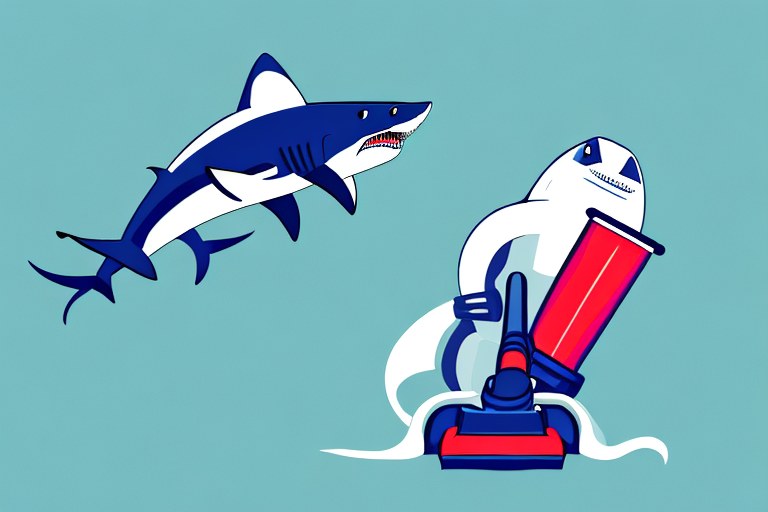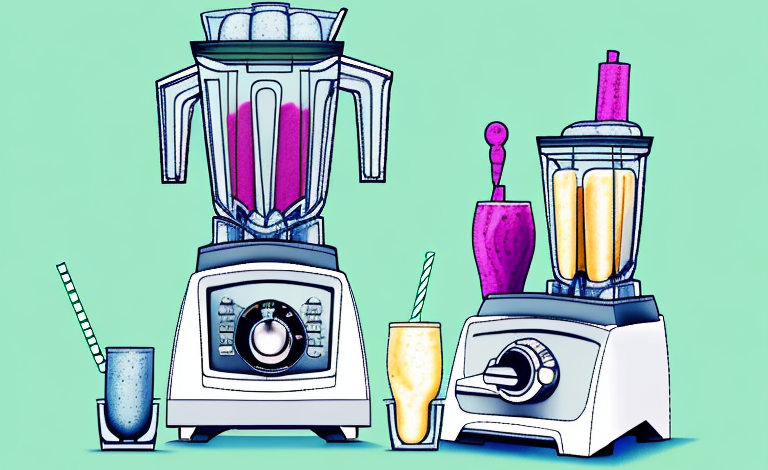Coffee is a morning ritual for many people, and having the right coffee maker can make all the difference. The taste of coffee can vary depending on several factors, including the machine used to brew it. In this article, we’ll discuss the various types of coffee makers available, their advantages and disadvantages, and which ones are best for making the perfect cup of coffee.
The factors that determine the taste of coffee
Before we dive into the different types of coffee makers, let’s first consider the factors that determine the taste of coffee. These include:
- The quality of the coffee beans
- The grind size of the coffee beans
- The amount of coffee used
- The water temperature
- The brewing time
All of these factors can affect the flavor profile of your coffee, and it’s important to keep them in mind when choosing a coffee maker.
Another important factor that can affect the taste of your coffee is the roast level of the beans. Different roast levels, such as light, medium, and dark, can produce different flavor profiles. Light roasts tend to have a more acidic and fruity taste, while dark roasts have a bolder and more bitter taste. It’s important to experiment with different roast levels to find the one that suits your taste preferences.
Understanding the different types of coffee makers
There are several different types of coffee makers on the market, each with their unique advantages and disadvantages:
Drip Coffee Maker
The most common type of coffee maker is the drip coffee maker. It works by heating water and then dripping it over coffee grounds in a filter, producing a pot of coffee. Drip coffee makers are easy to use and can make larger batches of coffee at once, making them perfect for homes or offices.
French Press
A French press is a manual coffee maker that uses a plunger and a mesh filter to brew coffee. It produces a rich, full-bodied coffee with a lot of flavor. French presses are perfect for coffee lovers who enjoy a more hands-on brewing experience.
Pour-Over
A pour-over coffee maker uses a cone-shaped filter that sits directly on the coffee mug or carafe. Coffee is then poured over the filter, and it drips into the container below. This method produces a clean, crisp cup of coffee that is perfect for those who appreciate a lighter brew.
Espresso Machine
Espresso machines use high-pressure water to force water through finely ground coffee, producing a concentrated shot of coffee known as espresso. Espresso machines are perfect for making lattes and cappuccinos and are also great for those who enjoy a strong cup of coffee.
Single-Serve Coffee Maker
Single-serve coffee makers use pre-packaged pods or cups to quickly brew a single cup of coffee. They are perfect for those who want a quick cup of coffee without having to make a whole pot. However, they can be more expensive in the long run because you have to keep buying the pods or cups.
Moka Pot
A Moka pot is a stovetop coffee maker that uses steam pressure to brew coffee. It produces a strong, flavorful coffee that is similar to espresso. Moka pots are perfect for those who want a strong cup of coffee but don’t want to invest in an expensive espresso machine.
Cold Brew Maker
A cold brew maker uses a slow brewing process that involves steeping coffee grounds in cold water for several hours. This method produces a smooth, low-acid coffee that is perfect for those who have sensitive stomachs. Cold brew makers are also great for making iced coffee drinks.
Manual vs automatic coffee makers: which is better?
The decision to choose a manual or automatic coffee maker depends on personal preference. Manual coffee makers, such as French presses and pour-overs, require more effort, but they allow for more control over the brewing process, resulting in a better-tasting coffee. Automatic coffee makers, on the other hand, are more convenient and produce consistent results every time.
Another factor to consider when choosing between manual and automatic coffee makers is the cost. Manual coffee makers tend to be less expensive than automatic ones, as they do not require any electricity or complex machinery. Additionally, manual coffee makers are often more durable and have a longer lifespan than automatic ones, which may need to be replaced more frequently.
However, for those who value convenience and speed, automatic coffee makers may be the better choice. With automatic coffee makers, you can simply press a button and have a fresh cup of coffee in minutes, without having to manually grind and brew the coffee. Automatic coffee makers also often come with additional features, such as programmable timers and the ability to make multiple cups at once.
How to choose a coffee maker that suits your needs
Choosing the right coffee maker depends on your personal preference, lifestyle, and budget. Consider the size of your household, how often you drink coffee, and the types of coffee you like to make. If you have a large family or entertain frequently, a drip coffee maker may be the best choice. If you enjoy a variety of coffee drinks, an espresso machine may be a better option. And if you’re looking for a small, portable option, a French press may be perfect for you.
Another important factor to consider when choosing a coffee maker is the brewing time. If you’re always in a rush in the morning, a single-serve coffee maker with a quick brewing time may be the best option for you. On the other hand, if you have more time to spare and enjoy the process of making coffee, a manual pour-over coffee maker may be a great choice. Additionally, if you’re concerned about the environmental impact of your coffee maker, look for options that use reusable filters or are made from sustainable materials.
The benefits of using a French press for brewing coffee
French presses have gained popularity in recent years due to their ability to produce a rich, full-bodied coffee. One of the benefits of using a French press is that it allows the coffee to steep, resulting in a more flavorful cup. Additionally, French presses are easy to use and clean, and they don’t require electricity or disposable filters, making them an environmentally-friendly option.
Another benefit of using a French press is that it gives you more control over the brewing process. You can adjust the water temperature, the amount of coffee grounds, and the steeping time to create a customized cup of coffee that suits your taste preferences. This level of control is not possible with other brewing methods, such as drip coffee makers. Furthermore, French presses are versatile and can be used to brew tea or cold brew coffee as well.
Why drip coffee makers are still popular today
Drip coffee makers are still the most popular type of coffee maker today, and for good reason. They are easy to use, produce consistent results, and can make large batches of coffee at once. Additionally, drip coffee makers can be found at a range of price points, making them accessible to everyone.
Making the perfect cup of coffee with a pour-over coffee maker
Making the perfect cup of coffee with a pour-over coffee maker requires a bit of practice and patience, but it’s worth it for the delicious, clean-tasting coffee it produces. To make a pour-over coffee, start by heating water to just below boiling. Place a filter in the pour-over coffee maker and add ground coffee. Slowly pour water over the coffee, allowing it to drip through the filter and into the container below. Adjust the water flow as needed to create the perfect cup of coffee.
The science behind espresso machines
Espresso machines use high-pressure water to force water through finely ground coffee, resulting in a concentrated shot of coffee. The pressure causes the coffee to extract more oils and flavor compounds, resulting in a rich, bold cup of coffee. Additionally, espresso machines usually have a built-in steam wand for frothing milk, making them perfect for making lattes and cappuccinos.
The advantages and disadvantages of using a single-serve coffee maker
Single-serve coffee makers are convenient and produce a quick, easy cup of coffee. They are perfect for those who only drink one or two cups of coffee a day or for households where everyone has different coffee preferences. However, single-serve coffee makers can be more expensive in the long run because you have to keep buying the pods or cups, and they are not as environmentally-friendly as other coffee makers.
How to clean and maintain your coffee maker for optimal performance
To ensure your coffee maker is performing at its best, it’s important to clean and maintain it regularly. This includes descaling the machine, cleaning the brewing basket and carafe, and replacing filters and other parts as needed. Always refer to the manufacturer’s instructions for specific cleaning and maintenance instructions.
Expert opinions on the best coffee makers on the market
When it comes to choosing the best coffee maker, there are many options on the market. Some popular and highly-rated coffee makers include:
- Technivorm Moccamaster
- Breville Precision Brewer
- AeroPress
- Bonavita BV1900TS
- Chemex Classic Series
Ultimately, the best coffee maker for you is the one that meets your specific needs and preferences.
Best budget-friendly options for a quality cup of joe
If you’re looking for a quality cup of coffee without breaking the bank, there are several budget-friendly options available. The AeroPress and Hario V60 pour-over are both affordable options that produce a great-tasting cup of coffee. Additionally, drip coffee makers like the Mr. Coffee Optimal Brew and Hamilton Beach FlexBrew are both highly-rated and affordable.
Comparing high-end versus mid-range coffee makers
High-end coffee makers like the Technivorm Moccamaster and the Breville Precision Brewer offer additional features and advanced brewing technology, resulting in a more complex and flavorful cup of coffee. Mid-range coffee makers like the Bonavita BV1900TS still produce a great-tasting cup of coffee but are a more affordable option for those on a budget.
How to use specialty brewing methods like cold brew or Turkish coffee with certain machines
Some coffee makers are specifically designed for certain brewing methods like cold brew or Turkish coffee. To make cold brew with a coffee maker, fill the carafe with cold water and add coarse coffee grounds. Let steep for 12-24 hours, strain the coffee, and serve. To make Turkish coffee, use a small coffee pot called a cezve and heat water, sugar, and finely ground coffee together until it comes to a boil. Remove from heat and serve.
Conclusion
Choosing the right coffee maker is a personal decision that depends on many factors, including taste preferences, lifestyle, and budget. Whether you prefer a French press or a drip coffee maker, with the right techniques and machine, you can create the perfect cup of coffee to start your day off right.



